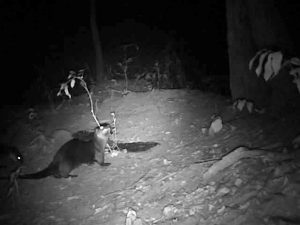
News reports Illinois is a good example for CWD management
Illinois has been managing chronic wasting disease for over 10 years. The first case of chronic wasting disease was detected in 2002. The state has been tireless in its efforts to slow the spread of the disease which is 100% fatal in white-tailed deer. As the disease spreads to new states, like Michigan, managers are forced to select and deploy a management program in an effort to control the disease among their valuable herds of white-tailed deer. Research that our team published in 2014 compared the effectiveness of Illinois’ disease management program to Wisconsin’s disease management program. We found that when both states practiced similar management strategies, the prevalence of chronic wasting disease was similar at approximately 1%. However, when Wisconsin modified their management, prevalence increased in the following years to 5%. In contrast, the prevalence in Illinois remained stable at 1%. Now as managers in states like Michigan make crucial decisions on how best to manage, they can look to Illinois as an example of success. Our research provides the scientific evidence necessary to support their claim to success.
Read the news article here and access the research publication here.


